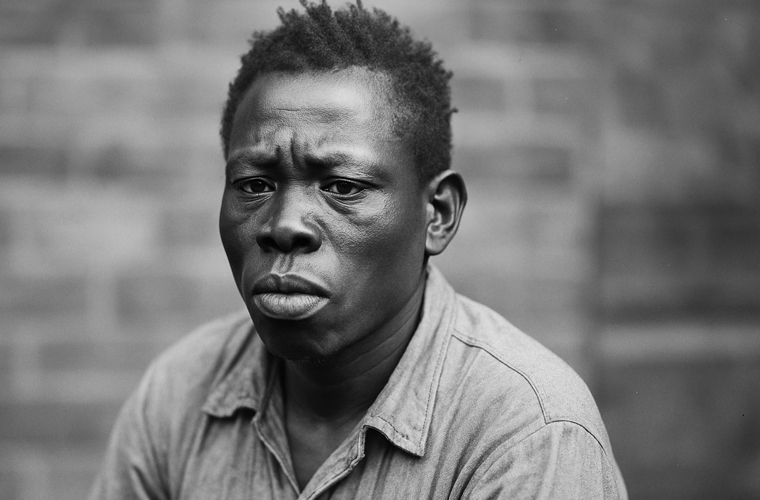A Story of Exploitation and Resilience
Ota Benga, a Mbuti man born around 1883 in the Congo Free State (now the Democratic Republic of Congo), endured a life marked by profound tragedy and exploitation. His story is a stark reminder of the dehumanizing effects of colonial oppression and scientific racism in the early 20th century. Standing at 4 feet 11 inches, Benga belonged to the Mbuti people, a forest-dwelling group known for their short stature. His early life was shattered when the Force Publique, a militia under Belgium’s King Leopold II, killed his wife and two children during a raid to enforce rubber collection. Benga survived only because he was hunting at the time, but he was later captured by Bashilele slave traders.
In 1904, American businessman Samuel Phillips Verner purchased Benga’s freedom for a pound of salt and a bolt of cloth, intending to exhibit him at the Louisiana Purchase Exposition in St. Louis. At the fair, Benga and other Africans were displayed in an anthropology exhibit, labeled as “cannibals” due to cultural practices like Benga’s ritually filed teeth. The spectacle drew crowds eager to gawk at what was presented as “primitive” humanity, reflecting the era’s racist pseudoscience. After the fair, Benga briefly returned to the Congo with Verner, but the loss of his second wife to a snakebite left him disconnected, prompting his return to the United States.
The most infamous chapter of Benga’s life unfolded in 1906 at the Bronx Zoo in New York City. Under the direction of William Hornaday and with support from eugenicist Madison Grant, Benga was displayed in the Monkey House alongside an orangutan named Dohong. Promoted as a “missing link” in human evolution, the exhibit attracted thousands, who jeered as Benga was encouraged to perform “savage” acts. The display sparked outrage, particularly from African-American clergymen like James H. Gordon, who condemned it as degrading. Public pressure led to Benga’s release from the zoo in September 1906.
After leaving the zoo, Benga was placed in the Howard Colored Orphan Asylum in Brooklyn, despite being an adult. In 1910, he moved to Lynchburg, Virginia, where he found a semblance of community at the Virginia Theological Seminary and College. Supported by figures like poet Anne Spencer, Benga worked at a tobacco factory, learned English, and had his teeth capped to blend into American society. He shared his knowledge of hunting and fishing with local children, finding moments of connection despite his displacement.
Yet, the weight of his experiences—losing his family, enduring exploitation, and facing cultural alienation—took a heavy toll. Benga longed to return to the Congo, but World War I halted transatlantic travel, dashing his hopes. On March 20, 1916, at approximately 32 years old, Benga died by suicide, shooting himself in the heart with a stolen pistol. He was buried in an unmarked grave, likely in Lynchburg’s White Rock Cemetery.
Ota Benga’s life exposes the cruelty of an era that commodified human beings for profit and pseudoscience. His story, though tragic, also highlights his resilience in navigating unimaginable hardship. Today, Benga’s legacy serves as a call to confront the historical injustices that shaped his fate and to honor the humanity of those exploited by systems of oppression.

